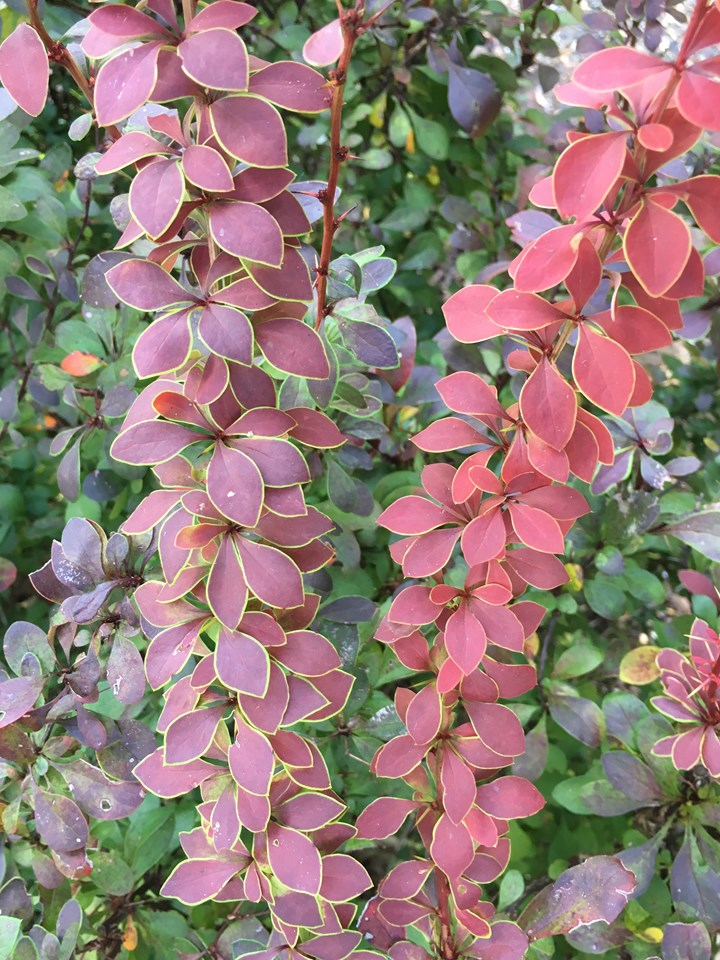Japanese Barberry (Berberis Thunbergii F. Atropurpurea ‘Golden Ring’)
Japanese Barberry
Berberis thunbergii, commonly called Japanese barberry, is a spiny, broad-rounded, deciduous shrub with obovate green leaves. It typically matures to 5′ tall and as wide. Leaves (variably sized to 1 1/4” long) typically turn attractive shades of orange, yellow and red in fall.
Forma atropurpurea have red to purple-red foliage.
Genus name comes from the Latinized form of the Arabian name for the fruit.
Specific epithet honors Swedish botanist Carl Peter Thunberg (1743-182- who reportedly identified this species in Japan in 178
‘Golden Ring’ typically grows in a mound to 3-4’ tall. Its reddish purple foliage emerges in spring. Each leaf develops a very thin golden margin (a golden ring), hence the cultivar name. Tiny, bell-shaped, pale yellow flowers (to 1/2” long) bloom in March-April in short racemes along spiny, reddish purple stems. Glossy, ellipsoid, bright red berries mature in fall and persist into winter. The berries are attractive to birds.

Easily grown in average, dry to medium, well-drained soil in full sun. Tolerates part shade, but performs best with full sun. This is a very adaptable shrub that is tolerant of urban conditions. Plants also tolerates heat and drought, but are generally intolerant of poorly-drained, wet soils. Plants spread slowly by creeping roots. Plants can also spread by self-seeding (birds will eat the fruits and distribute the seed). Plant branches may root where they touch the ground. This species is considered to be somewhat invasive in some areas (particularly in eastern North America).
Propagate from cuttings.
| Hardiness zone | 4 - 8 |
| Sun light | Full Sun |
| Water | Dry To Medium |
| Maintenance | Low |
No serious problems. Some susceptibility to bacterial leaf spot, anthracnose, root rots, wilt, aphids, barberry webworm and scale. Spiny stems often trap unsightly wind-blown trash.
Japanese barberry forms an excellent barrier or hedge. It is also effective when planted in groups or as a specimen.
Accent for small areas in the landscape. Foundations. Border fronts.
| Common name | Japanese Barberry |
| Botanical name | Berberis Thunbergii F. Atropurpurea 'Golden Ring' |
| Plant type | Deciduous Shrub |
| Family | Berberidaceae |
| Hardiness zone | 4 - 8 |
| Water | Dry To Medium |
| Maintenance | Low |
| Flower color | Pale Yellow |
| Flowering period | March - April |
| Height | 3 - 4 Ft. |
| Width | 3 - 4 Ft. |